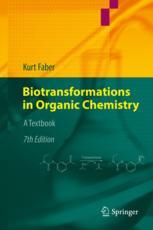

Most ebook files are in PDF format, so you can easily read them using various software such as Foxit Reader or directly on the Google Chrome browser.
Some ebook files are released by publishers in other formats such as .awz, .mobi, .epub, .fb2, etc. You may need to install specific software to read these formats on mobile/PC, such as Calibre.
Please read the tutorial at this link: https://ebookbell.com/faq
We offer FREE conversion to the popular formats you request; however, this may take some time. Therefore, right after payment, please email us, and we will try to provide the service as quickly as possible.
For some exceptional file formats or broken links (if any), please refrain from opening any disputes. Instead, email us first, and we will try to assist within a maximum of 6 hours.
EbookBell Team

4.4
12 reviewsThis well-established textbook on biocatalysis provides a basis for undergraduate and graduate courses in modern organic chemistry, as well as a condensed introduction into this field. After a basic introduction into the use of biocatalysts—principles of stereoselective transformations, enzyme properties and kinetics—the different types of reactions are explained according to the 'reaction principle', such as hydrolysis, reduction, oxidation, C–C bond formation, etc. Special techniques, such as the use of enzymes in organic solvents, immobilization techniques, artificial enzymes and the design of cascade-reactions are treated in a separate section. A final chapter deals with the basic rules for the safe and practical handling of biocatalysts.
The use of biocatalysts, employed either as isolated enzymes or whole microbial cells, offers a remarkable arsenal of highly selective transformations for state-of-the-art synthetic organic chemistry. Over the last two decades, this methodology has become an indispensable tool for asymmetric synthesis, not only at the academic level, but also on an industrial scale.In this 7th edition new topics have been introduced which include alcohol and amine oxidases, amine dehydrogenases, imine reductases, haloalkane dehalogenases, ATP-independent phosphorylation, Michael-additions and cascade reactions. This new edition also emphasizes the use of enzymes in industrial biotransformations with practical examples.